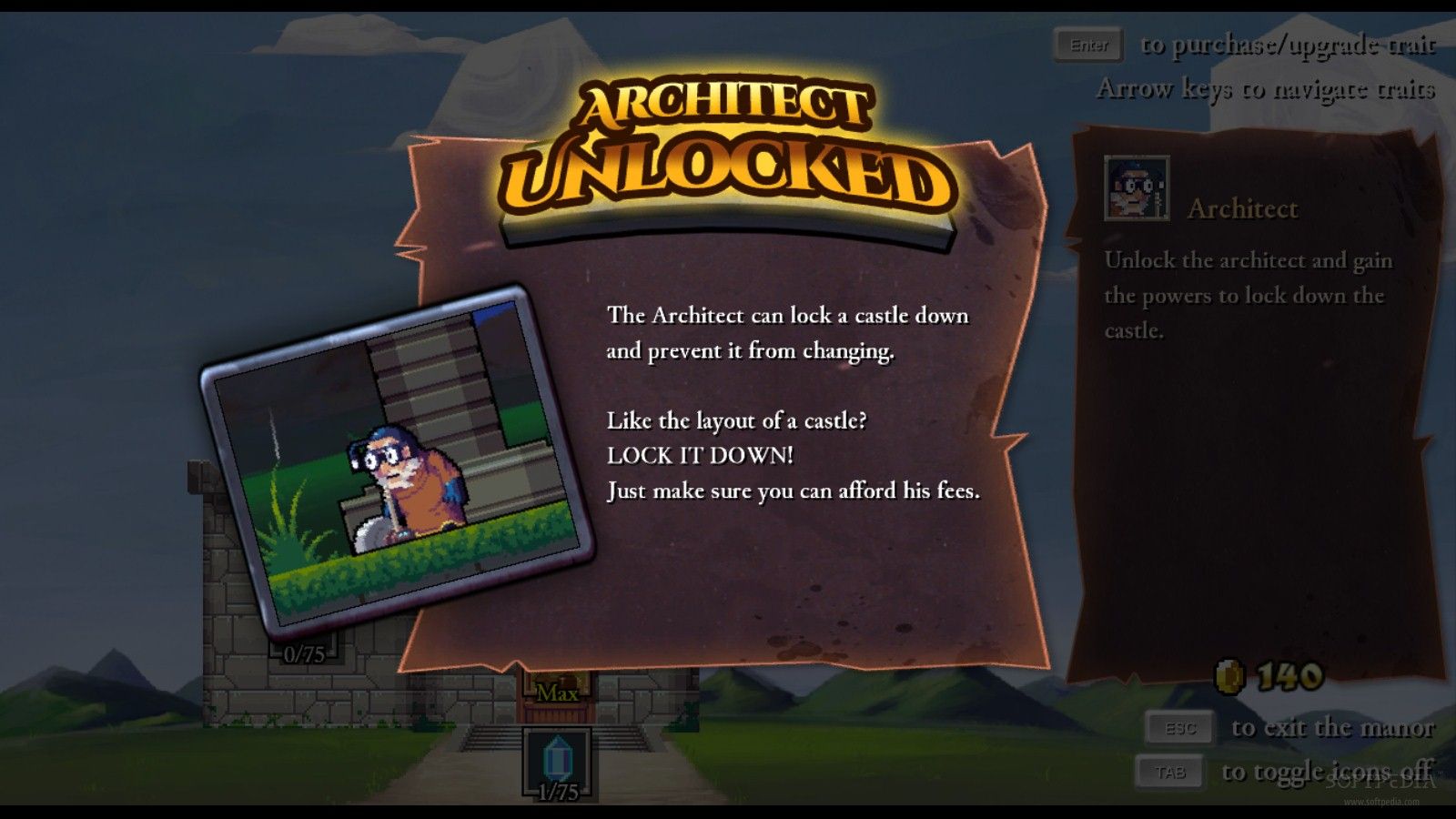

When you upgrade each class, they each also gain a special class ability. Each class has their own strengths and weaknesses, such as the Barbarian has the highest health, but the Shinobi hits the hardest (at the cost of no ability to critical hit).

Additionally each class, other than the Dragon, can be upgraded as well. You can unlock other classes such as the Shinobi, Miner, Lich, and Dragon. Initially you have access to four classes Barbarian, Knight, Knave, and Mage. You may call me Your Majesty or God-King, your choice. You may choose to do this if you would like to immediately take on a boss that you died on, but generally this is to be avoided because the gold lost from defeating that boss is rather large. The Architect will lock your previous dungeon in, so that your next run will not be newly randomly generated and you will still have the same map coverage that you ended with in your last run, but at the charge of a percentage loss of gold. Plans are usually located in special chests, either Fairy chests which have a certain room requirement to achieve them, or mini boss enemies that are randomly scattered throughout the dungeon. The Enchantress can add runes to increase your abilities (such as double or triple jumps and dashes, etc), but likewise you have to locate plans for those runes within the dungeon. With the Blacksmith you can purchase upgrades and equip them, but you have to find the plans for those upgrades within chests in the dungeon. Some of the more important upgrades are to add the Blacksmith, Enchantress, and the Architect. So it is quite the subtle little thing, but it makes a lot of sense when you stop and think about it. As your family gains power and experience diving into the haunted castle, the family’s own property grows in magnificence and your descendants start with more power and better goods. This is visually represented by growing your family’s castle. The upgrade system starts with a couple entries, and as you purchase each entry for the first time, it unlocks a new entry. Your best bet is to spend as much of your inherited gold as you can on upgrades before you re-enter the castle. You can upgrade Charon to only take 50% of your remaining gold, but that takes quite a while to achieve that kind of wealth. Before you can re-enter the castle, though, Charon stands at the door to take all your gold. Thankfully, unlike Souls, when you die you keep your gold by the inheritance mechanic, but you cannot upgrade anything until that actually happens. There is one currency, this time gold instead of souls, and it is used to either upgrade your character stats or purchasing equipment or runes. In fact, the developer themselves admit this was their inspiration. Many modern roguelike games introduce this mechanic, and this one bears a lot of similarity to the way that the Souls games handle it. Another modern convention that has entered into the game is persistent upgrades. Certainly I do not mind not having to input a continue code, thankfully gone is that old mechanic with the cartridges lacking battery backup. This is a very old school game, with old school aesthetics, with the addition of a few new school ideas where it was determined to be an improvement. The story, however, takes an intentional back seat to the gameplay. But before there were the other great homage retro games, such as Shovel Knight and Axiom Verge, there was this gem on the PC. In fact, many have called this game the best Castlevania in years, although it had nothing to do with Konami themselves, unsurprisingly. Instead of an rpg or even arpg, the gameplay itself bears more resemblance to the metroidvania style games. At its roots you start with rogue like elements, and then you build from there. It does, however, pride itself on unpredictability. Likewise, while this game can be a bit difficult, it is not brutally punishing. If a dungeon is randomly generated but the exit is two steps away from where you entered, than that wasn’t very hard at all. This tended to cause a high degree of difficulty much of the time, but sometimes that would also make things easy. While the term rogue is often used nowadays to delineate a game that is difficult, what it originally stood to mean was more in line with randomness and procedurally generated assets.

Rogue legacy story update#
However, it does take many modern innovations and uses them to update the formula. For this game is truly a legacy of the rogue games that came before it. There are few names in video games that so aptly describe their product than Cellar Door Games’ Rogue Legacy. By William Haderlie / February 20th, 2016


 0 kommentar(er)
0 kommentar(er)
